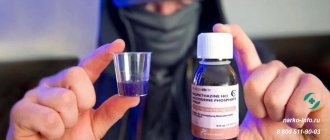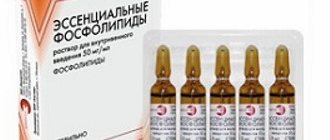Pharmacological properties of the drug Postinor
The mechanism of action of levonorgestrel (D-13в-ethyl-17в-ethynyl-17-hydroxy-4-gonen-3-one) at the indicated dose is mainly due to inhibition of ovulation and prevention of fertilization (in the event that sexual intercourse occurred before ovulation, when the likelihood of fertilization is higher), as well as changes in the endometrium when taking the drug, which prevent the implantation of a fertilized egg. The drug is ineffective if implantation of a fertilized egg has already occurred. When using Postinor, unwanted pregnancy can be prevented in approximately 85% of cases. The longer the interval between sexual intercourse and taking Postinor, the lower the effectiveness of the drug (in the first 24 hours - 95%; from 24 to 48 hours - 85%; from 48 to 72 hours - 58%). There is no data on the effectiveness of the drug when taken 72 hours after sexual intercourse. At the recommended dose, levonorgestrel does not have a significant effect on blood clotting, lipid and carbohydrate metabolism. After oral administration, levonorgestrel is rapidly and almost completely absorbed. After taking 1 tablet of Postinor, the maximum concentration of levonorgestrel in the blood serum (on average - 14.1 ng/ml) is achieved after 1.6 hours. Then the decrease in the concentration of levonorgestrel occurs in two stages, the half-life ranges from 9 to 14.5 hours. Levonorgestrel excreted from the body in the form of metabolites with urine and feces in approximately equal quantities. The biotransformation of levonorgestrel is similar to that of steroids. The drug is hydroxylated in the liver, and its metabolites are excreted in the form of glucuronides. Known metabolites of levonorgestrel do not have pharmacological activity. Levonorgestrel binds to plasma proteins, mainly albumin and sex hormone-binding globulin. Only 1.5% of the administered dose is found in the blood serum in free form, and 65% has a specific association with sex hormone-binding globulin. Absolute bioavailability is almost 100%. About 0.1% of the drug dose is excreted in breast milk.
Combination with other drugs and alcohol
Due to their metabolic characteristics, it is not recommended to combine some medications with Postinor. These include:
- proton pump inhibitors: Lansoprozole, Omeprazole;
- reverse transcriptase inhibitor: Nevirapine;
- antiretroviral: Ritonavir;
- antiepileptic drugs: Oxcarbazepine, Carbamazepine, Primidone, Phenytoin;
- immunosuppressants: Tacrolimus;
- antibiotics: Rifampicin, Ampicillin, Tetracycline, Rifabutin, Griseofulvin;
- retinoids: Tretinoin.
Levonorgestrel reduces the effectiveness of hypoglycemic drugs and worsens the use of anticoagulants of coumarin derivatives, Phenindione. Plasma concentrations of glucocorticosteroids may increase.
The simultaneous use of Levonorgestrel and Cyclosporine suppresses the mechanism of metabolism of the latter. It is an immunosuppressant prescribed for internal organ and bone marrow transplants. Failure to neutralize the drug leads to its accumulation in the liver and the appearance or intensification of adverse reactions.
Treatment with drugs based on St. John's wort, including those prepared at home, is also a contraindication.
The compatibility of Postinor and alcohol is controversial. Ethanol is metabolized through the liver. There are several ways of oxidizing and removing ethyl alcohol from the body. In some cases, they coincide with those for hormonal agents. Competition for transport proteins can lead to impaired metabolism of either alcohol or drugs.
Use of the drug Postinor
2 tablets inside. To achieve a more reliable effect, the first tablet should be taken as soon as possible after sexual intercourse (but no later than 72 hours), and the second - 12 hours (but no later than 16 hours) after taking the first. If vomiting is observed within 3 hours after taking any tablet, you should take 1 more tablet. Postinor can be taken on any day of the menstrual cycle, but only if the previous menstruation was timely. After using the drug, barrier contraception must be used until the next menstruation. After using Postinor, taking permanent oral hormonal contraceptives is not contraindicated.
Intrauterine contraceptives
An intrauterine device (IUD) is an object that is placed in the uterus to prevent the embryo from attaching to its wall, that is, the onset of pregnancy. The IUD does not prevent fertilization, but causes very early miscarriage. There are contraindications for using an IUD, so this issue should be discussed with a gynecologist. In addition, the IUD is installed no earlier than 6 weeks after a natural birth that occurred without complications. An IUD is not installed after a cesarean section: the scar in the uterus is regarded as a “weak link” that can be damaged if a foreign object is constantly in the uterus. In addition, there are many contraindications for the installation of an IUD (inflammatory diseases of the uterus in the postpartum period, endometriosis, serious diseases of the cardiovascular system, etc.).
The IUD does not affect the quantity and quality of breast milk. A woman is recommended to take a break of at least 6-12 months from stopping the use of the IUD before trying to conceive - so that there is no threat of termination of pregnancy.
Wearing an IUD involves monitoring the condition of the spiral. In addition, if you wear an IUD, you need to visit a gynecologist twice a year for preventive purposes, since the IUD can provoke inflammation of the uterus and appendages - and this condition must be prevented or diagnosed as quickly as possible.
You can wear the IUD for up to 5 years; longer wearing greatly increases the likelihood of developing inflammatory complications.
Intrauterine contraceptives also include the Mirena system, which, like other intrauterine contraceptives, is inserted into the uterine cavity, but has an additional effect due to the fact that it constantly releases small amounts of gestagens, which have a local effect. Due to this, menstrual flow is reduced, up to complete temporary disappearance, and the greatest contraceptive effect is achieved.
Back to contents
Special instructions for the use of the drug Postinor
The drug can only be used in extreme cases. Postinor is not a contraceptive for regular use. Taking it does not always prevent pregnancy. If a woman does not remember when sexual intercourse took place, or if unprotected sexual intercourse has already taken place in the same menstrual cycle 72 hours before taking the drug, fertilization is possible. In this case, the use of the drug is ineffective. If menstruation is delayed by more than 5 days or its onset is timely, but the course is different from normal, it is necessary to exclude pregnancy. If, despite the use of the drug Postinor, fertilization still occurs, the possibility of ectopic pregnancy should be considered. The use of Postinor is not recommended for severe liver dysfunction. Severe intestinal diseases (for example, Crohn's disease) may cause impaired absorption of the drug . After using the drug, menstruation occurs at the expected time and occurs as usual. In some cases, menstruation may begin several days earlier or later than expected. After using Postinor, it is recommended to examine a doctor to decide whether to use the method for regular contraception. If Postinor was taken due to a missed dose of a regular hormonal contraceptive, and menstruation did not occur during the next 7-day break in taking the contraceptive drug, pregnancy should be excluded. Repeated use of Postinor during one menstrual cycle is not recommended due to possible disruption of this cycle. Postinor should not be taken during pregnancy; the drug does not terminate an existing pregnancy. In the event of pregnancy with the use of progestogens, a teratogenic effect has not been identified. Levonorgestrel practically does not pass into breast milk. The potential impact of levonorgestrel on infant development can be reduced if both tablets are taken immediately after breastfeeding and if breastfeeding is avoided after taking the drug.
Male contraception
In addition to the contraceptive effect, a condom also protects a woman from infections. The latter is important in the first months after childbirth, when the woman’s body is still very weak, and in the first 1-2 months there may be bloody discharge from the uterus (at least in small quantities), and the cervix remains slightly open. This creates a risk of uterine infection and serious complications. By the way, this is why it is not recommended to resume intimate relationships until the discharge from the uterus stops.
At the same time, after childbirth, many women experience hormonal changes, which causes vaginal dryness. Therefore, the condom “rubs” and its use causes discomfort to both spouses. Use lubricant and gradually everything will return to normal. Just remember that the latex of a condom can crack if it comes into contact with oils, so you should use only gel lubricants, and not Vaseline, hand cream or similar substances that happened to be at hand at the last moment. Even if the integrity of the condom is intact, oil lubricants can lead to the formation of microcracks in its wall, which increases the risk of unplanned conception.
Back to contents
Effect on the fetus
If, after taking Postinor, pregnancy does occur, then a series of examinations should be carried out. If the fetus is attached to the wall of the uterus and has survived a strong hormonal shake-up in its mother’s body, it means that it is quite likely developing normally.
A number of studies have confirmed that the pharmacological agent has no negative effect on the fetus.
The drug changes the structure of the endometrium and affects the degree of functionality of the egg and sperm. The child is born absolutely healthy. Therefore, if a woman has decided to carry and give birth to her baby, she does not have to worry about the correctness of its development after she takes Postinor.
The presented emergency contraception is quite unsafe for women's health. It should be used only as a last resort, without any contraindications for use.
Surgical methods
Extreme types of contraception are rare: they require either express indications or serious intentions of the woman. Such methods include, for example, surgical sterilization, i.e. ligation of the fallopian tubes, as a result of which the union of the egg and sperm that occurs in the fallopian tube becomes impossible: as a result of an artificially formed barrier, the female and male reproductive cells cannot meet. The effectiveness of the method reaches 100%, but it may happen that after many years of a quiet life, a woman again wants to become a mother. And solving the problem will be very difficult: it is impossible to restore the patency of the fallopian tube after ligation, and pregnancy can only occur through IVF (“test tube baby”).
The same applies to male sterilization, which involves cutting the vas deferens on both sides. As a result, no sperm gets into the ejaculate. The testicles remain unharmed and continue to produce hormones, so libido, erection and orgasm are not affected.
To summarize, we can say that contraceptive methods for women after childbirth are as varied and individual as for all other representatives of the fair sex. Choosing the best method means protecting yourself from unwanted pregnancy, your family from possible conflicts, and your children from insults in the future. Think and start right now!











